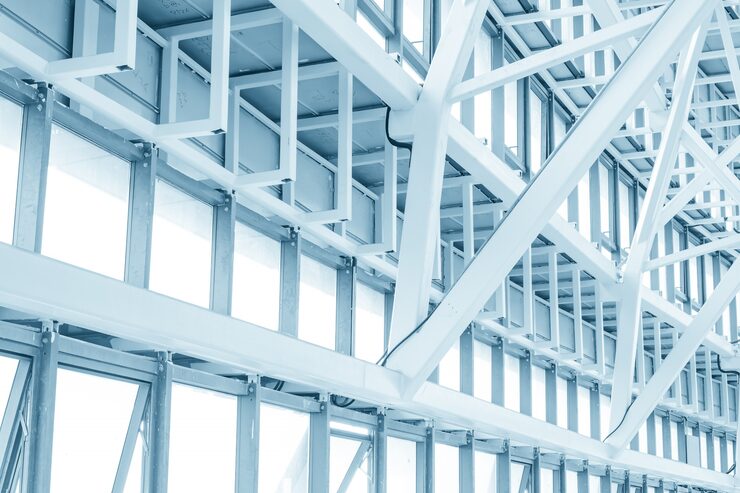Building a safe and compliant workplace often depends on more than just training or manuals—it begins with the physical structures that support daily operations. Companies aiming for ISO certification or striving to meet OSHA standards frequently turn to reliable systems that can be adapted, scaled, and documented with confidence. MiniTec Aluminum Framing provides that foundation, offering a way to combine efficiency with regulatory consistency.
Structural Consistency Supporting ISO Process Requirements
ISO standards are built on repeatability and consistency. The framework behind equipment, workstations, and process layouts must meet those expectations with dependable accuracy. MiniTec Aluminum Framing offers uniformity in dimensions, surface finish, and connection methods that support documentation of controlled processes. Because each part is designed to exact tolerances, companies can reference structural data directly in ISO compliance records without concerns of variation.
This consistency also supports repeat builds across multiple facilities. If one location documents its equipment frame specifications for certification, another plant can replicate the same system with identical MiniTec aluminum framing material. That level of reliability is essential for ISO auditors, who focus on whether processes and equipment remain the same each time they are reviewed.
Modular Assembly Methods Aligned with OSHA Safety Practices
OSHA emphasizes worker safety during both production and assembly. A modular aluminum framing system fits directly into this approach by reducing the risks associated with heavy welding or cutting. Components are connected with secure fastening methods instead of hot work, which minimizes hazards on the shop floor.
Assembly flexibility also means that safety guards, rails, or protective panels can be installed quickly without extended downtime. For companies needing to respond to OSHA safety inspections, MiniTec extruded aluminum framing provides a way to implement changes without introducing new risks to employees during installation.
Load Capacity Reliability Reinforcing Compliance Documentation
Engineers preparing compliance documents must prove that structures can withstand their intended loads. MiniTec aluminum framing material provides published load data that can be integrated into safety files, giving inspectors clear references for performance. These published figures save time and reduce the chance of disputes during audits.
Load reliability also supports preventive maintenance records. If the system is rated for a specific weight capacity, maintenance teams can schedule checks based on documented use rather than guesswork. This proactive approach strengthens both ISO and OSHA compliance files by demonstrating measurable oversight.
Guarding Systems Reducing Workplace Exposure Risks
Workplace safety depends heavily on minimizing exposure to moving machinery. MiniTec aluminum frame kit designs allow companies to build guarding systems that enclose hazardous zones without sacrificing visibility or access for maintenance. OSHA standards specifically emphasize protective barriers, and framing kits provide an efficient method for meeting those requirements.
Guarding also contributes to risk assessments under ISO requirements. By documenting protective enclosures as part of process safety analysis, companies show auditors they have considered worker interaction with machinery. MiniTec systems allow those enclosures to be documented as permanent, consistent fixtures rather than temporary fixes.
Ergonomic Workstation Design Meeting ISO Efficiency Standards
ISO certification includes efficiency and human factors within its scope. Ergonomic workstation design plays a significant role in achieving those standards, and MiniTec extruded aluminum framing allows customized builds that align with ergonomic guidelines. Adjustable workbenches, monitor stands, and equipment supports can all be configured to reduce worker fatigue.
The flexibility of this material also means upgrades are straightforward. If audits or employee feedback reveal inefficiencies, a modular aluminum framing system can be reconfigured to improve workstation design while maintaining compliance records. This adaptability demonstrates ongoing commitment to ISO principles of continuous improvement.
Material Durability Contributing to Long Term Regulatory Adherence
Durability is more than a cost factor; it influences regulatory compliance over time. MiniTec aluminum framing material resists corrosion and wear, which means safety structures and equipment supports remain consistent for years without replacement. Long-term stability is a critical factor in both OSHA and ISO audits, where inspectors evaluate whether safety and quality controls are sustainable.
This durability also reduces the need for frequent modifications. Stable equipment frames help companies maintain compliance with documented specifications, avoiding constant revisions to certification records. By keeping the infrastructure intact, businesses reinforce the reliability that both standards require.
Integrated Enclosures Ensuring OSHA Machine Safeguarding Rules
OSHA requires that machinery be safeguarded against accidental contact. Integrated enclosures built with MiniTec extruded aluminum framing create solid, secure barriers that meet those rules. The framing system supports clear polycarbonate panels, mesh inserts, or solid panels depending on the level of protection needed.
Because the system is modular, enclosures can be extended or modified as production requirements change. This makes it easier to address OSHA recommendations immediately, preventing repeat citations. A documented enclosure system also simplifies the evidence needed during safety audits.
Flexible Configurations Simplifying ISO Audit Readiness
ISO audits often require companies to show that processes and layouts can adapt to evolving requirements. Flexible framing systems demonstrate that adaptability clearly. With a modular aluminum framing system, equipment can be rearranged, expanded, or reduced while maintaining controlled documentation.
This readiness reduces audit stress, as companies can prove that their structures are not fixed in outdated designs. Instead, auditors see that MiniTec Aluminum Framing supports both the initial certification and future adjustments, all while keeping compliance records current and accurate.

